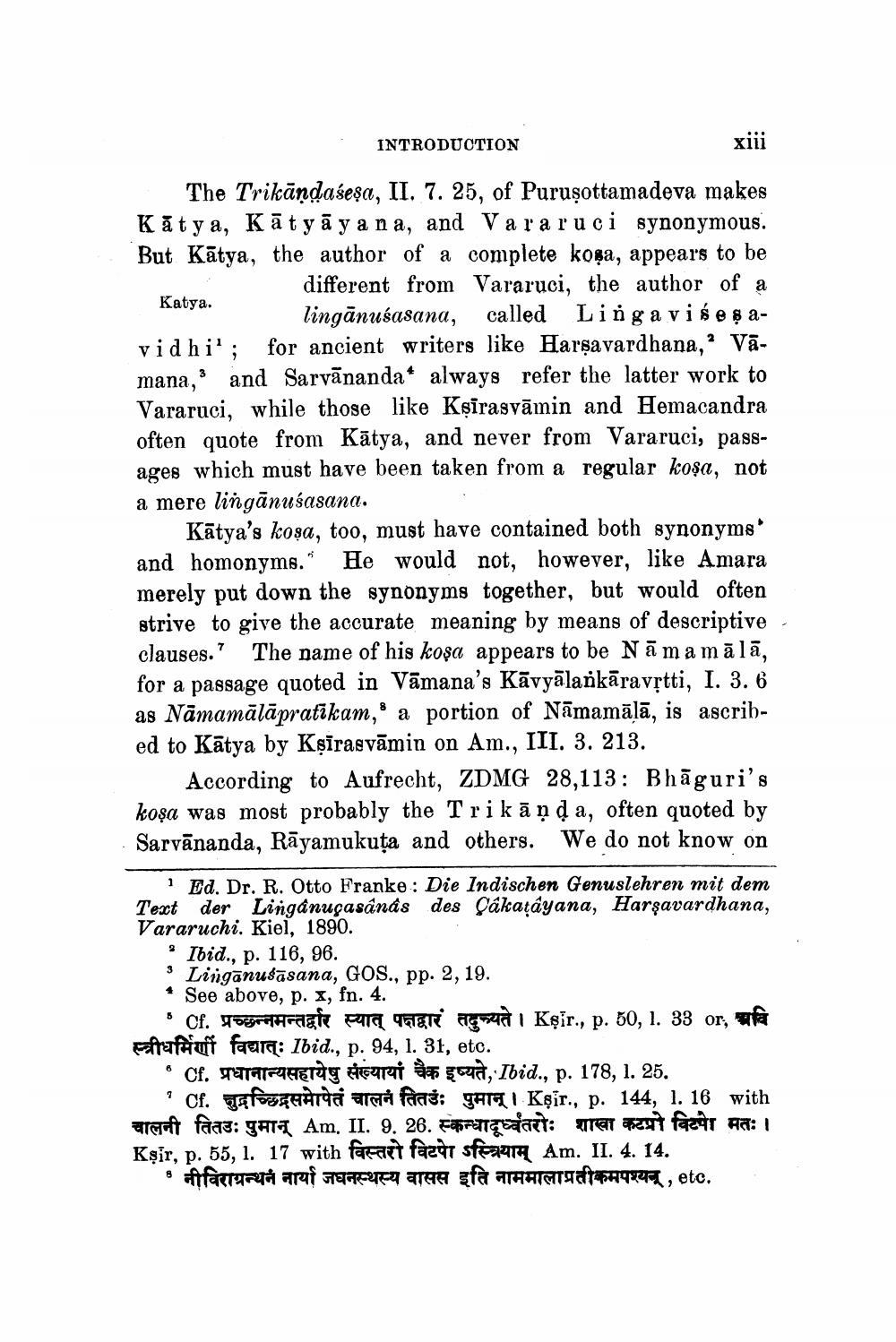________________
INTRODUCTION
Katya.
The Trikandaseṣa, II. 7. 25, of Purusottamadeva makes Katya, Katyaya na, and Vara ruci synonymous. But Katya, the author of a complete kosa, appears to be different from Vararuci, the author of a lingānusasana, called Linga vises avidhi'; for ancient writers like Harṣavardhana,2 Vāmana,3 and Sarvananda* always refer the latter work to Vararuci, while those like Kṣirasvamin and Hemacandra often quote from Katya, and never from Vararuci, passages which must have been taken from a regular koşa, not a mere lingānuśasana.
Katya's kosa, too, must have contained both synonyms* and homonyms." He would not, however, like Amara merely put down the synonyms together, but would often strive to give the accurate meaning by means of descriptive clauses." The name of his koşa appears to be Namamalā, for a passage quoted in Vamana's Kavyalankaravṛtti, I. 3. 6 as Namamālāpratikam, a portion of Namamālā, is ascribed to Katya by Kṣirasvamin on Am., III. 3. 213.
xiii
According to Aufrecht, ZDMG 28,113: Bhaguri's kosa was most probably the Trikanda, often quoted by Sarvananda, Rayamukuța and others. We do not know on
1 Ed. Dr. R. Otto Franke: Die Indischen Genuslehren mit dem Text der Lingánuçasánás des Çákatayana, Harşavardhana, Vararuchi. Kiel, 1890.
2
Ibid., p. 116, 96.
3 Linganusasana, GOS., pp. 2, 19.
See above, p. x, fn. 4.
8
Cf. प्रच्छन्नमन्तर्द्वार स्यात् पक्षद्वारं तदुच्यते । Ksir., p. 50, 1.33 or, अवि faftiuft faara: Ibid., p. 94, 1. 31, etc.
6
Cf. प्रधानान्यसहायेषु संख्यायां चैक इष्यते, Ibid., p. 178, 1. 25.
7
Cf. क्षुद्रच्छिद्रसमोपेतं चालनं तितः पुमान् । Ksir, p. 144, 1. 16 with
चालनी तितउः पुमान् Am. II. 9. 26. स्कन्धादूर्ध्वतरोः शाखा कटप्रो विटा मतः ।
Kşir, p. 55, 1. 17 with facart fazer sfera Am. II. 4. 14.
8
नवग्रन्थन नार्या जघनस्थस्य वासस इति नाममालाप्रतीकमपश्यन्, etc.




